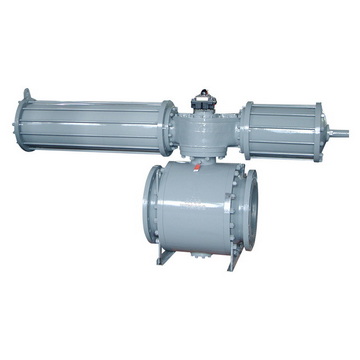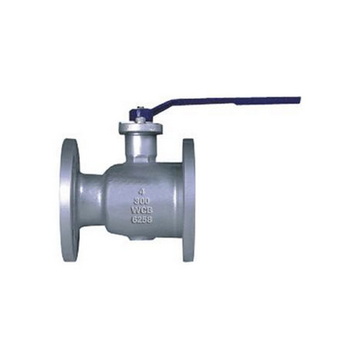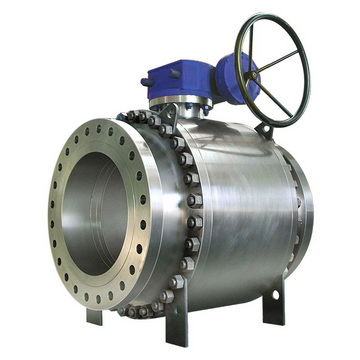Ball Valve Seat Types Explained: PTFE, PEEK, Nylon and More
Content Menu
● What is a Ball Valve Seat and Why It Matters
● PTFE: The Workhorse for Broad Compatibility
● PEEK: High-Performance with Temperature and Wear Resistance
● Nylon: Balanced Cost and Performance
● Other Materials and Hybrid Designs
● Selecting the Right Seat Material for Your Project
● Manufacturing Considerations for OEM Partnerships
● Lifecycle and Maintenance Considerations
● Case for OEM Partnerships in Global Markets
● Conclusion and Call to Action
● FAQ
>> Q2. In high-temperature throttling service, how does PEEK compare with PTFE for seat performance?
>> Q3. When is nylon a suitable choice for ball valve seats?
>> Q4. Are backup seals or dual-seating arrangements beneficial?
>> Q5. What tests should OEM partners provide for ball valve seats?
Introduction
Ball valves are a cornerstone of modern fluid control, delivering reliable shutoff and precise regulation across diverse industries. The ball valve seat is a critical element that directly influences sealing performance, reliability under cycling, and long-term service life. For international brands, distributors, and manufacturers seeking OEM collaboration, understanding seat materials—PTFE, PEEK, Nylon, and other engineering polymers—enables tailored solutions that meet media compatibility, temperature and pressure demands, and lifecycle cost targets. This article delves into the main seat materials, their properties, typical applications, and how to design with OEM partnerships in mind to achieve robust performance in oil and gas, seawater desalination, and offshore drilling environments.

What is a Ball Valve Seat and Why It Matters
The ball valve seat forms the contact surface against the ball to create a resin-tight seal when the valve closes. It must withstand repetitive actuation, varying pressures, and potential thermal cycling without significant deformation or wear. The right seat material determines leak tightness, friction, wear resistance, and chemical compatibility with the process fluid. In OEM contexts, seats are often engineered with backing structures, surface finishes, and sometimes dual-seating arrangements to enhance reliability during high-cycle service, throttling, or aggressive media exposure. The choice of seat material directly influences maintenance intervals, spare parts inventory, and overall system uptime for demanding projects. This is especially important in offshore drilling, seawater desalination, and upstream/midstream/downstream oil and gas segments where performance margins are tight. The core considerations expand beyond material itself to include compatibility with lubricants, compatibility with the ball surface finish, and the overall assembly design for ease of replacement and field service. PTFE, PEEK, Nylon, and related materials each bring distinct advantages to different service envelopes, and OEMs can customize blends, backing, and surface finishes to optimize outcomes. This integrated approach is central to delivering reliable equipment across global markets.
PTFE: The Workhorse for Broad Compatibility
PTFE seats are widely used due to their excellent chemical inertness, broad temperature tolerance, and low friction characteristics. They perform well with many solvents, acids, and hydrocarbons, making PTFE a versatile choice for petrochemical processing, water treatment, and pharmaceutical environments. PTFE's low friction reduces actuation torque and contributes to smoother operation, especially in throttling scenarios where precision is required. However, PTFE can experience creep under sustained load and may exhibit dimensional changes under elevated temperatures, which can necessitate design accommodations such as backup rings or reinforced backing in high-temperature or high-cycle applications. For OEM collaborations, PTFE seats are commonly paired with backing materials or composite configurations to bolster extrusion resistance and seat stability under thermal cycling. PTFE remains a reliable baseline material for many mixed-service needs, offering predictable performance and broad regulatory acceptance across standard industrial codes. In offshore and desalination contexts, PTFE's corrosion resistance and clean profile support long service life with reduced maintenance burdens. Additionally, PTFE-based seats often align with sanitary and food-grade requirements where applicable, providing a flexible solution for diverse markets. In practice, the use of PTFE seats is frequently complemented by surface finish optimization and quality control to ensure consistent seating pressure and leak-tight performance across multiple actuation cycles. This makes PTFE a baseline choice for many OEM seat designs, particularly in regions prioritizing supply stability and standardized performance metrics. The broad applicability of PTFE seats reinforces their role in OEM portfolios as a dependable, versatile solution for a wide range of media and operating conditions. PTFE remains a foundational material in many brand catalogs and is often the starting point for seat material selection in mixed-service environments. PTFE's reliability across many process fluids, combined with cost efficiency, continues to drive its widespread adoption in ball valve seat design. For OEM collaboration, PTFE seats can be designed with reinforced backing or incorporated into composite seat structures to address specific wear and extrusion challenges encountered in high-cycle desalination and offshore oil and gas applications. PTFE's compatibility with a broad range of lubricants and process fluids further supports its role as a versatile OEM option that can be customized to meet local regulatory and industry standard requirements. PTFE's track record across industries underpins confidence in its continued use in evolving valve technologies and supplier ecosystems. PTFE remains a dependable, flexible option for many OEM partners seeking reliable performance with broad media compatibility.
PEEK: High-Performance with Temperature and Wear Resistance
PEEK seats deliver superior mechanical strength, outstanding high-temperature performance, and robust chemical resistance in demanding service. They maintain dimensional stability under pressure and offer enhanced wear resistance and resistance to extrusion under frequent cycling compared to PTFE in harsh conditions. In offshore oil and gas, seawater desalination, and high-temperature processing, PEEK can deliver improved seat life and reduced maintenance intervals in comparison with PTFE. PEEK often enables thinner seat profiles with high stiffness, enabling compact valve designs and precise actuation characteristics under cycling conditions. While PEEK materials can carry higher material costs, the lifecycle benefits in critical applications—such as offshore platforms and high-temperature desalination loops—often justify the investment. OEM strategies frequently incorporate PEEK with protective coatings, surface finishes, or composite backing to optimize wear and reduce friction further, particularly where throttling and rapid cycling are common. PEEK's performance in extreme conditions—where PTFE may soften or creep—drives its selection for high-pressure and high-temperature service. In integrated OEM programs, PEEK seats are frequently paired with reinforcement or lubrication strategies to maintain seating integrity in dynamic environments, reinforcing the durability and predictability of valve operation over time. PEEK's chemical resistance also supports compatibility with aggressive hydrocarbons and certain solvent systems encountered in upstream, midstream, and downstream operations. For brands seeking long-term reliability in offshore or desalination projects, PEEK-based seats provide a compelling combination of stiffness, heat resistance, and wear performance, often translating to reduced replacement costs and improved process uptime. The design and sourcing of PEEK seats in an OEM context benefit from close coordination with material suppliers to ensure traceability, consistent quality, and alignment with international standards. PEEK-based seat designs may also be integrated with dual-seating arrangements to further mitigate extrusion risk in high-temperature service. The overall takeaway is that PEEK seats are a strategic choice when operating conditions push PTFE toward its performance envelope's edge, delivering extended service life and resilient performance in demanding environments. In OEM collaboration, sharing performance data and field performance feedback helps tailor PEEK seat configurations to target media and duty cycles.
Nylon: Balanced Cost and Performance
Nylon seats offer a practical balance of chemical resistance, toughness, and cost efficiency. They are typically suitable for moderate temperatures and non-aggressive media, where robust sealing and resistance to extrusion are still desired. Nylon's mechanical resilience supports reliable operation under high cycle counts, and blends or composites can further enhance wear resistance and temperature stability. In OEM programs, nylon seats are favored for mid-range applications where performance targets demand reasonable durability without the premium cost of PEEK. Nylon's relatively lower moisture absorption compared to some elastomeric seats helps stabilize dimensions in fluctuating humidity environments, although high humidity or immersion in certain fluids can still influence dimensional behavior over time. For specialized applications such as chilled water systems or non-corrosive process lines, nylon seats can offer a cost-effective solution with dependable service life. OEM strategies often combine nylon seats with backing materials or coatings to improve wear characteristics and resistance to extrusion, especially in high-cycle or high-pressure scenarios. Nylon seats also support faster lead times and more flexible pricing in multi-region OEM programs, aiding rapid deployment for brand partners seeking global market reach. The trade-offs with nylon revolve around temperature and chemical exposure; for some media and duty cycles, alternative materials like PTFE or PEEK may deliver superior lifespan. Across global OEM projects, nylon seats can be a practical choice when the process fluids are moderate in aggressiveness and the operating temperature remains within the material's reliable range. The choice of nylon blends and processing methods in seat design allows optimization for cost-performance balance in mass production environments, enabling OEM partners to deliver value-driven solutions to customers while maintaining acceptable reliability. Nylon remains a valuable part of the material portfolio for many valve lines, particularly when price sensitivity and steady supply are priorities in international markets.
Other Materials and Hybrid Designs
Beyond PTFE, PEEK, and Nylon, ball valve seats employ other materials and hybrid configurations to address niche needs:
- POM (Polyoxymethylene): Known for high stiffness and low friction, POM seats can improve resistance to wear in clean fluids and when paired with compatible elastomer seals. POM is sometimes used as a backing or structural component to enhance rigidity while maintaining a compatible sealing surface.
- Composite blends: Modern seat designs may blend PTFE with reinforcing fillers or carbon fibers to increase extrusion resistance and wear performance without sacrificing chemical compatibility.
- Elastomeric components and back-up seals: In certain designs, elastomeric materials (such as EPDM, NBR, or FKM) act as secondary seals or backup rings to improve sealing under thermal cycling or dynamic loading. These elements complement the primary polymer seat and contribute to overall reliability in challenging service. In OEM contexts, the combination of a hard seat surface with elastomeric backing can yield a robust, low-friction, and leak-tight solution across a broad range of conditions.
Selecting the Right Seat Material for Your Project
The material selection should be guided by a structured assessment of media compatibility, temperature and pressure regimes, cycle rate, abrasion risk, and regulatory requirements. OEM collaboration enables tailoring seat materials to meet project-specific duty cycles, media composition, and lifecycle costs. A typical decision pathway includes:
- Media and chemical compatibility: PTFE and PEEK provide broad chemical resistance; Nylon is suitable for less aggressive lines. The final choice depends on the specific chemical species, solvency, and salt content in seawater environments. This alignment with media dictates the long-term corrosion resistance and sealing performance.
- Temperature and pressure range: High-temperature service or frequent cycling often favors PEEK or reinforced PTFE designs for reduced extrusion risk and better dimensional stability.
- Cycling and wear considerations: High-cycle applications benefit from wear-resistant surfaces and carefully engineered backing assemblies to minimize seat deformation and leakage over time.
- Industry standards and cleanliness: Sanitary, pharmaceutical, and food-grade lines may impose additional material constraints. PTFE and PEEK typically satisfy many standard requirements while meeting cleanliness expectations.
- OEM collaboration dynamics: Co-design sessions to align seat geometry, finish, and backing with brand-specific standards, valve body tolerances, and connection interfaces ensure that the final product integrates smoothly into existing catalogues and field deployments.

Manufacturing Considerations for OEM Partnerships
OEM success hinges on process control, traceability, and the ability to deliver consistent quality at scale. In practice, successful OEM partnerships emphasize:
- Material sourcing and traceability: Establish transparent supply chains for seat materials to assure consistent quality and regulatory compliance across regional markets.
- Engineering collaboration: Joint development efforts that address media, temperature, and cycle profiles are essential to delivering differentiated valve solutions that meet specific project needs.
- Documentation and after-sales support: Clear data sheets, installation and maintenance guides, and service bulletins enable end-users to operate equipment confidently and schedule timely replacements.
- Quality control and testing: Standardized leakage tests, seat wear and cycling tests, and material verification against defined specifications underpin reliability and customer trust.
- Logistics and MOQs: Efficient production planning and flexible minimum order quantities help OEM partners scale deployments across multiple regions with reliable lead times.
Lifecycle and Maintenance Considerations
Valve seats are subject to wear from repeated actuation, particulate contamination, and chemical exposure. Proactive maintenance strategies—such as regular inspection of seating surfaces, monitoring for signs of extrusion or micro-leakage, and maintaining clean process streams—help maximize valve life. OEM partners can incorporate maintenance-friendly features, such as field-replaceable seats or quick-release seat designs, to reduce downtime and simplify service in remote offshore or desalination installations. Operational data collected during field use supports ongoing optimization of material selection and design refinements for subsequent production cycles, reinforcing the value proposition for OEM collaborations. A well-documented maintenance plan, with clear inspection intervals and replacement criteria, helps operators sustain reliability and safety across demanding environments.
Case for OEM Partnerships in Global Markets
For foreign brands seeking to extend market reach, a China-based ball valve OEM partner can offer a compelling mix of material versatility, scalable manufacturing, and strong quality control. The ability to provide flexible seat material options—PTFE, PEEK, Nylon, POM, and composite blends—paired with customization in seat geometry, backing, and surface finish, supports a broad portfolio aligned with regional standards and end-user expectations. A dedicated OEM partner can deliver tailored product families with consistent lead times, robust testing documentation, and efficient after-sales support, enabling brands to meet project deadlines and reduce total cost of ownership for end users in oil and gas, seawater desalination, and offshore platforms.
Conclusion
Ball valve seats are central to seal integrity, durability, and lifecycle performance in critical industrial sectors. PTFE, PEEK, Nylon, and related materials each offer distinct advantages and trade-offs, and the most effective OEM solutions combine precise material selection with tailored geometry, robust backing, and rigorous quality control. By collaborating with a dedicated OEM partner that understands global markets, media compatibility, and the specifics of offshore, desalination, and oil and gas duty cycles, brands can deliver reliable, cost-effective valve solutions that meet stringent standards and regional requirements. This approach supports fast-tracked product introductions, streamlined supply chains, and stronger customer trust across international markets. If a project requires a customized seat solution that aligns with media, temperature, pressure, and cycling needs, engage in a direct collaboration focused on seat material optimization, design customization, and lead-time planning. Contact us to discuss your next ball valve seat project and to begin the OEM partnership journey.
Conclusion and Call to Action
For brands, distributors, and manufacturers seeking OEM ball valve solutions with optimized seat materials and tailored geometries, the path to reliable performance begins with a collaborative engineering dialogue. Reach out to explore material options, design customization, and production planning that meet your project's media, temperature, and cycle requirements. Partner with a Chinese ball valve manufacturer that delivers global scalability, transparent quality control, and responsive technical support to accelerate your time-to-market and maximize uptime in demanding environments.

FAQ
Q1. Which ball valve seat material offers the best combination of chemical resistance and wear performance for mixed-service applications?
A1. PTFE is widely favored for broad chemical compatibility and low friction, making it a versatile baseline for mixed-service environments; however, in demanding high-temperature or high-cycle scenarios, PEEK may provide superior wear resistance and dimensional stability.
Q2. In high-temperature throttling service, how does PEEK compare with PTFE for seat performance?
A2. PEEK typically maintains better dimensional stability and wear resistance at elevated temperatures and under frequent cycling, reducing extrusion risk and extending seat life compared with PTFE in demanding conditions.
Q3. When is nylon a suitable choice for ball valve seats?
A3. Nylon seats are cost-effective for moderate temperatures and non-aggressive media, offering reliable sealing with reasonable wear resistance, particularly in mid-range applications where price sensitivity is important.
Q4. Are backup seals or dual-seating arrangements beneficial?
A4. Yes, in high-pressure or high-cycle service, backup seals or dual-seating arrangements help maintain sealing integrity during wear and thermal cycling, improving overall reliability.
Q5. What tests should OEM partners provide for ball valve seats?
A5. OEM partners should supply leakage testing, seat wear and cycling data, material verification, and conformance to applicable standards to ensure reliability under field conditions.
Hot tags: Ball Valve Seat Types, PTFE Ball Valve Seat, PEEK Ball Valve Seat, Nylon Ball Valve Seat, Ball Valve Seat Materials, Best Ball Valve Seat Materials, PTFE vs PEEK Valve Seat, Nylon vs PTFE Ball Valve Seat, High-Performance Valve Seats, Valve Seat Material Comparison